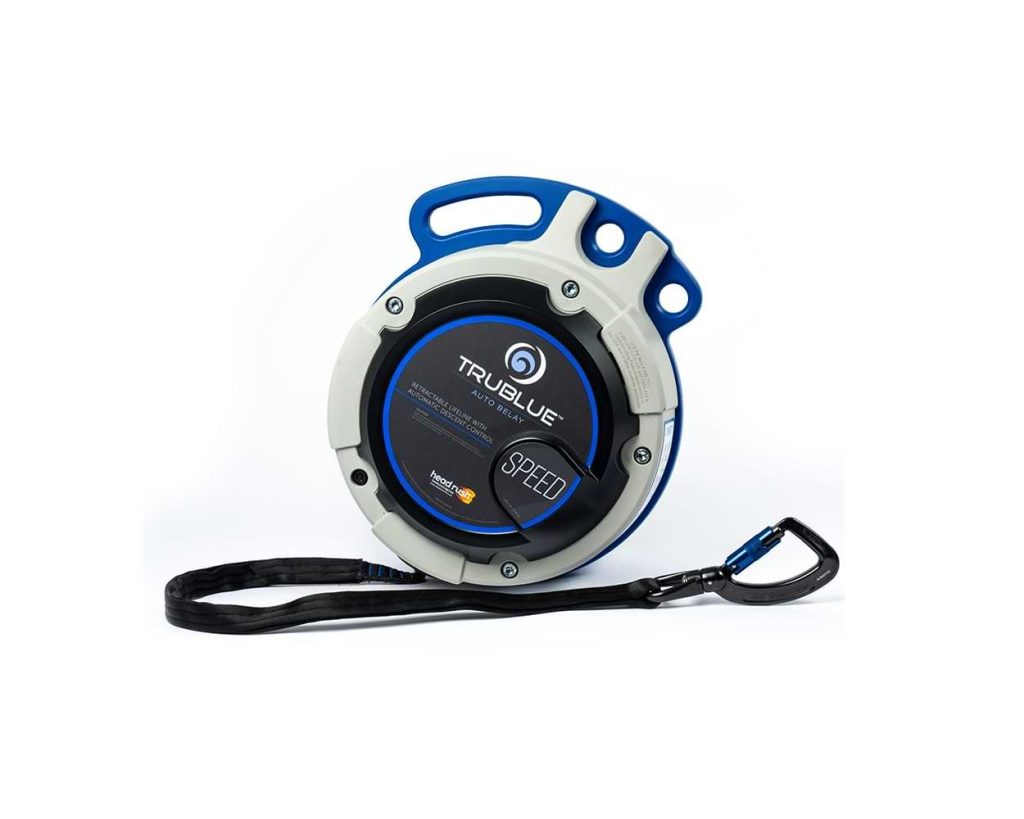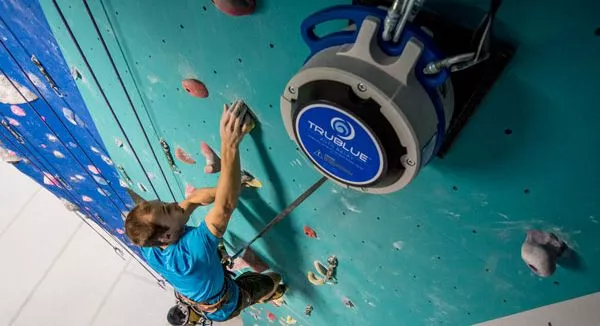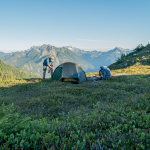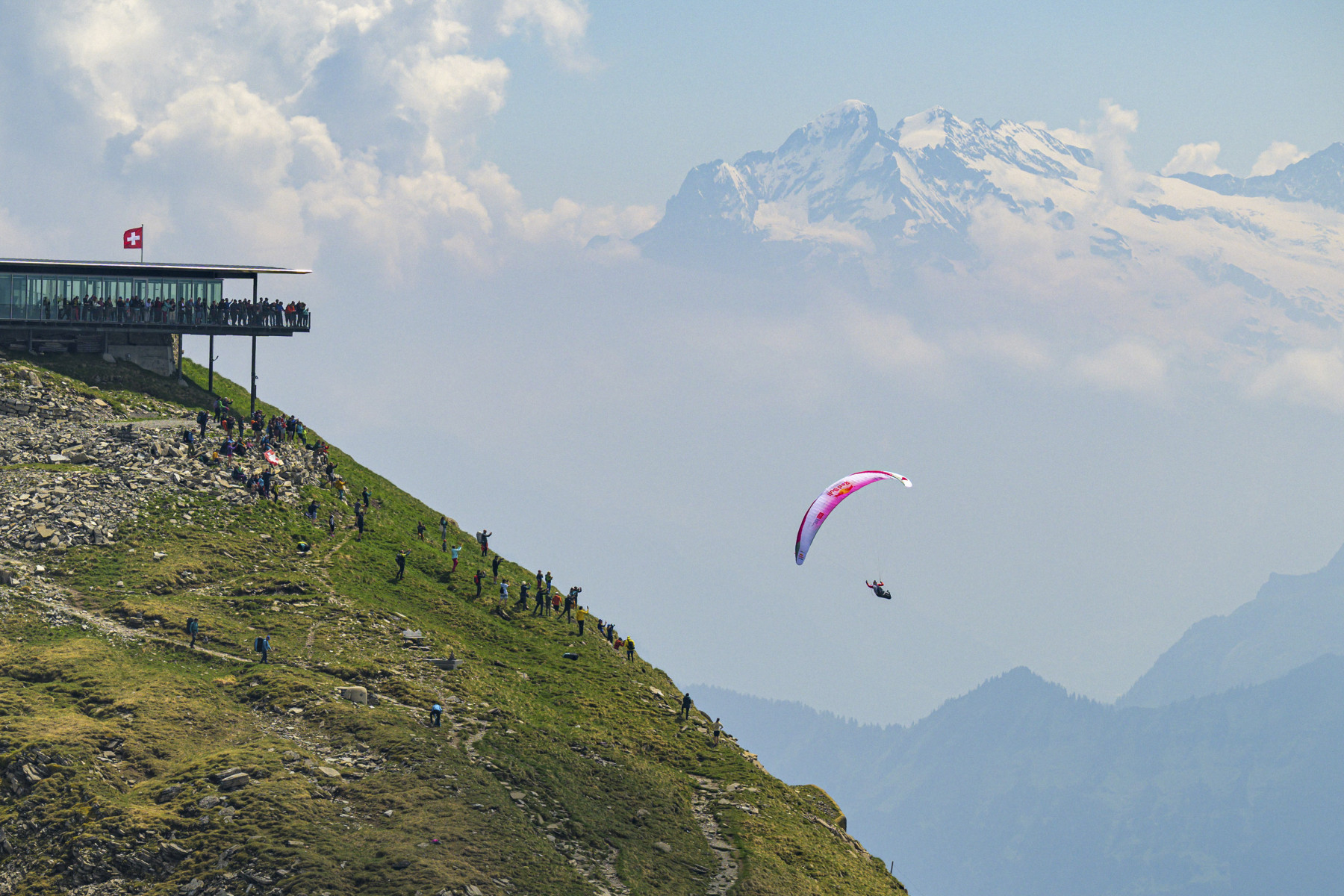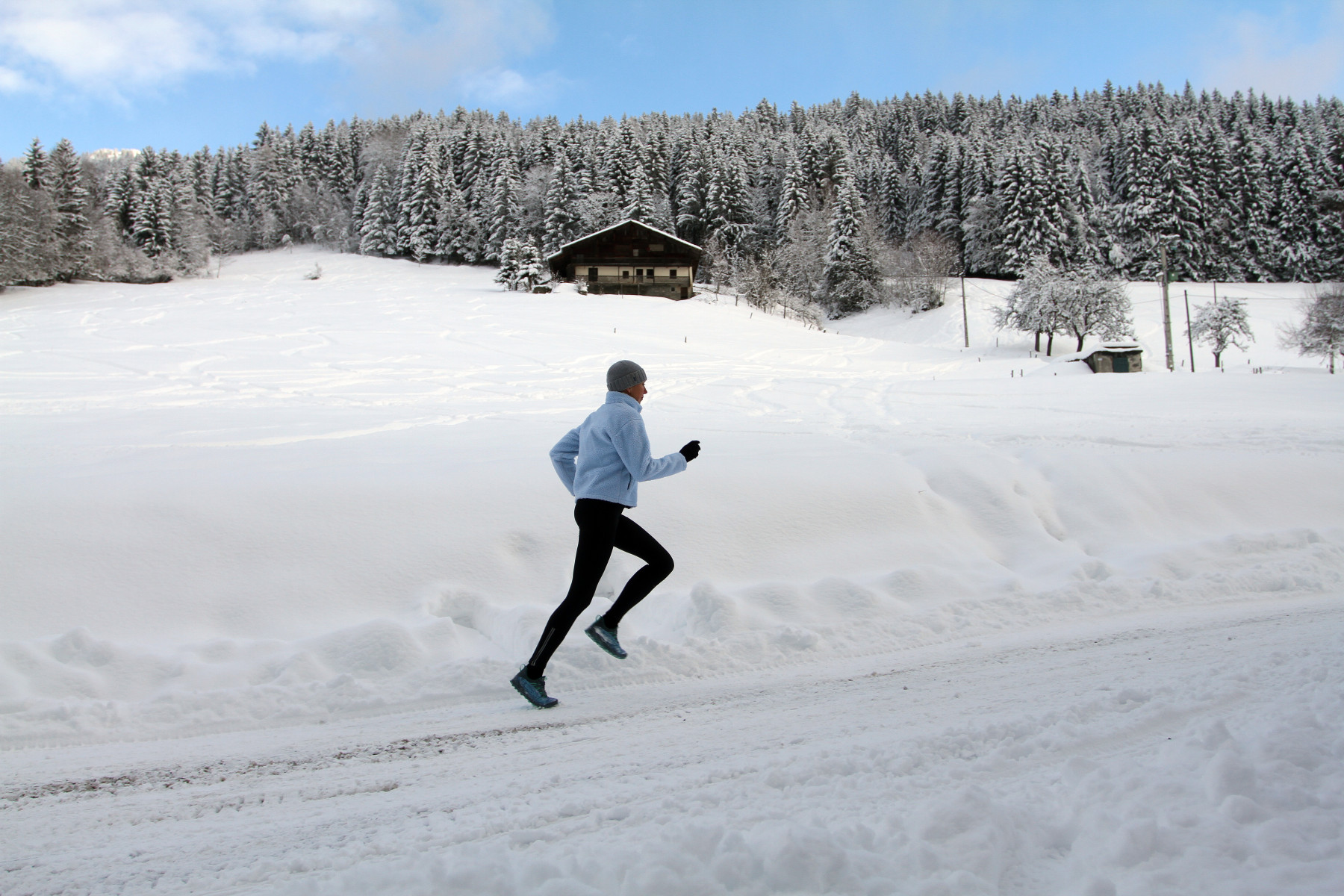Indoor climbing walls offer a range of benefits, including the ability to climb year-round, the opportunity to train and improve climbing skills, and the chance to meet other climbers. Climbing is a sport that requires strength, technique, and determination, and indoor climbing walls provide a safe and controlled environment to practice and develop these skills and just have fun.
Whether you’re a beginner or an experienced climber, indoor climbing walls in Switzerland offer a variety of options to suit your needs. So, grab your climbing shoes and chalk bag and head to one of these indoor climbing gyms for a fun and challenging workout.
Over the years, indoor climbing in Switzerland has evolved greatly. The sheer number of indoor climbing centres in Switzerland has increased significantly. According to Swiss Review, there are now over 50 indoor climbing walls in Switzerland and so Indoor climbing centres have become more popular and accessible, to wide variety of users, not just climbers wanting to train to climb outdoors.. Many schools and universities now having climbing walls in their gymnasiums and it has become a fun sport in its self and an excellent way to introduce youngsters to climbing.
The indoor climbing centres have become larger and more sophisticated, with many offering a variety of climbing walls, bouldering areas, and training facilities. For example, Evolution – Centro di Arrampicata in Taverne, Ticino, is one of the biggest indoor climbing centres in Switzerland, offering 1400 sqm of climbing surface and more than 200 routes that can be climbed all year round.
The atmosphere and culture of indoor climbing centres have also evolved. Many centres now offer a social and community-oriented environment, with events, competitions, and training programs.
The technology and equipment used in indoor climbing centres along with the variety and types of holds have also improved, with innovations such as auto-belay systems, LED lighting, and fantasy holds.
Indoor climbing is both a popular and growing sport in Switzerland, reflecting the passion and excitement behind the sport, especially with the inclusion of climbing in the Olympics for the first time in 2020.
Accessible to people of all ages and skill levels. You don’t need a climbing partner, you can go on your own and use the boulder areas or the auto belayers, and many indoor climbing centres offering classes and programs for beginners. As an exciting sport that offers a range of benefits, including physical fitness, mental challenge, and social connection. With the increasing number of indoor climbing centres and the development of new technologies and equipment, indoor climbing is likely to continue to evolve and attract more climbers in the future.
Short history
The history of indoor climbing walls is a relatively recent but fascinating journey that has transformed climbing from an outdoor adventure to an accessible and controlled indoor activity. Here is a brief overview of the key milestones in the development of indoor climbing walls:
1. **Early Beginnings (1960s):** The concept of indoor climbing walls emerged in the 1960s, primarily as a training tool for climbers preparing for outdoor expeditions. These early walls were rudimentary and often made of plywood or simple wooden structures. They focused on replicating natural rock formations to some extent.
2. **Invention of Artificial Holds (1970s):** The 1970s witnessed significant advancements with the invention of artificial climbing holds, which allowed for a more diverse and challenging climbing experience indoors. This innovation led to the creation of more purpose-built indoor climbing walls.
3. **Development of Commercial Climbing Gyms (1980s):** The 1980s marked the transition of indoor climbing from a niche training tool to a commercialized activity. Climbing gyms, equipped with more sophisticated walls and safety measures, began to appear in various parts of the world. These gyms attracted climbers and enthusiasts alike, expanding the sport’s reach.
4. **Sport Climbing Boom (1990s):** The 1990s saw a surge in the popularity of sport climbing, and indoor climbing walls played a crucial role in this growth. Climbing competitions, including lead climbing and bouldering events, became more prominent, further fuelling the demand for indoor climbing facilities.
5. **Advancements in Wall Design (2000s):** The 21st century brought significant advancements in climbing wall design and technology. Walls evolved from simple wooden structures to engineered marvels with varying angles, textures, and features, providing a wide range of climbing experiences.
6. **Accessibility and Inclusivity (2010s):** Indoor climbing walls became increasingly accessible to people of all ages and abilities. The sport gained recognition as a family-friendly activity and a tool for physical fitness. Climbing gyms diversified their offerings to include features like auto-belay systems and adaptive climbing programs for individuals with disabilities.
7. **Olympic Recognition (2020s):** In a historic development, sport climbing, which heavily relies on indoor climbing walls for training and competition, was included in the Olympic Games for the first time in Tokyo 2020 (held in 2021). This milestone cemented climbing’s status as a mainstream sport and further popularized indoor climbing.
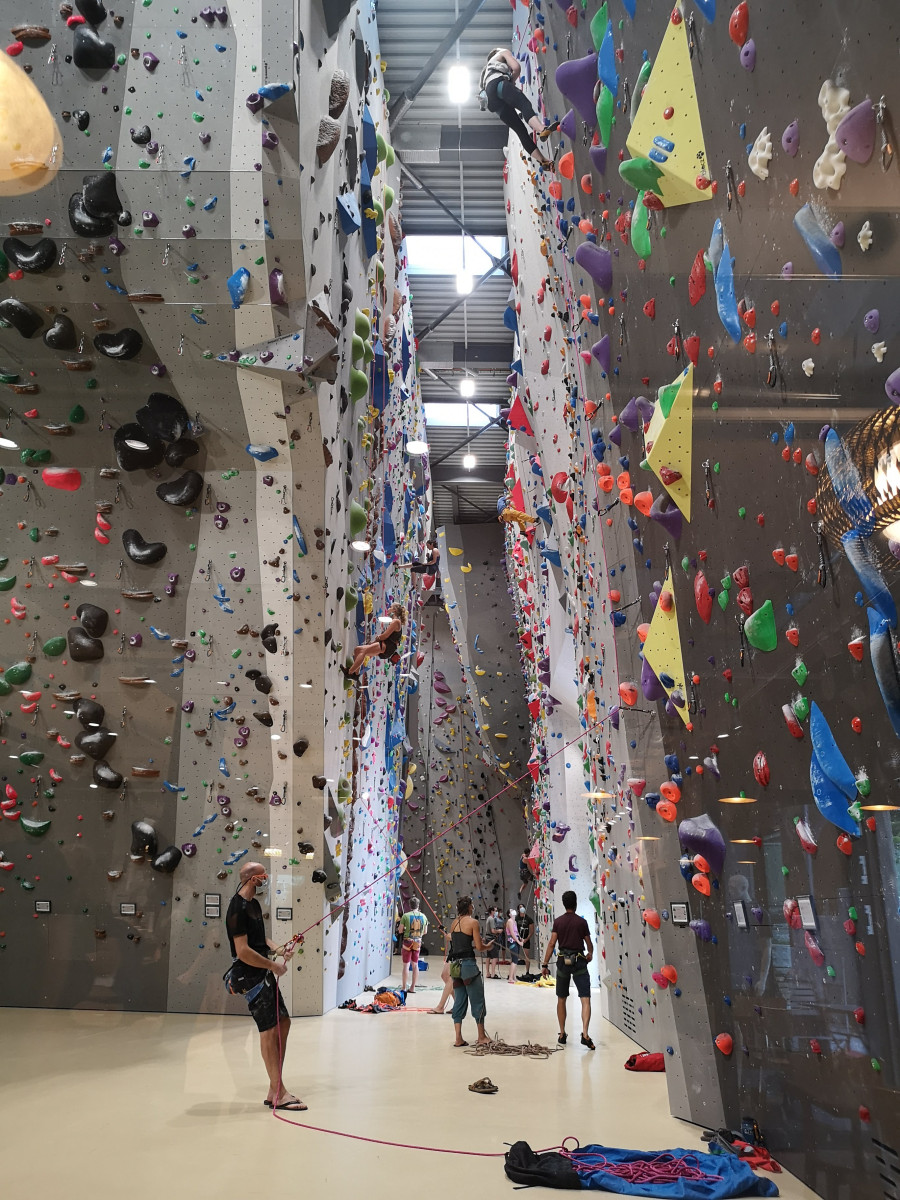
Swiss Indoor
A small selection from over 50 boulder halls and climbing walls in Switzerland. With so many excellent modern climbing centres one is not far away from you where ever you are in the country.
Gaswerk Wädenswil
The Gaswerk climbing hall in Wädenswil, located on the southern shore of Lake Zurich, is one of the largest climbing halls in the world. It opened in April 2021 with the aim of setting a new standard for climbing halls. The hall boasts more than 6,000 square meters of walls designed for climbing enthusiasts. It excels not only in size but also in the attention paid to the design of the climbing spaces to maximize the use of space and make the experience enjoyable for climbers of all levels.
The main hall has a floor plan of 38×20 m and a height of 17 m. There are 2,470 square meters of climbing walls for all specialties and levels of practice, from vertical walls to large overhangs of up to 10 meters, and approved walls for speed climbing. There are 95 climbing lines.
In addition to the main hall, there is a “dry” training area and another 400 m2 climbing hall that can be climbed up to 10 m high. The bouldering hall is in a dedicated room and is directly connected to the main hall. The climbing walls, up to 4 meters high, are distributed over two levels and it is possible to climb from one level to another.
The outer walls of the building were equipped with a length of over 100 m and a climbing surface of 1700 m2. The building was built using prefabricated reinforced concrete elements and steel structures. This makes it an interesting warren of spaces with some large halls for top roping or lead climbing, some small caves for bouldering, and a giant external wall.
The opening hours for the Gaswerk climbing hall in Wädenswil:
Monday, Tuesday, Thursday, Friday: 11:00 – 23:00
Early climbing on Tuesday: 07:30 – 23:00
Saturday and Sunday: 09:00 – 20:00
Please note that the climbing and bistro operations are open until half an hour before the hall closes. Also, special opening hours apply during holidays. It’s always a good idea to check with the facility for the most up-to-date information.
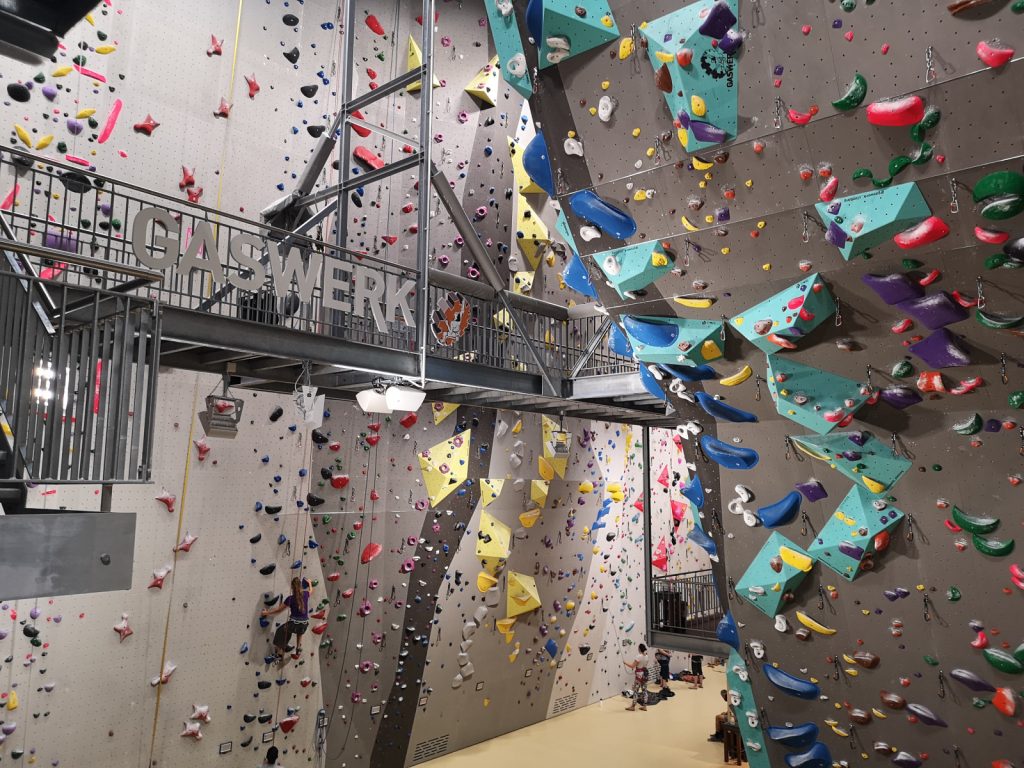
Bouldering Blocfeld, Winterthur
Blocfeld Boulderpark & Bistro is a popular bouldering facility located in Winterthur, Switzerland. The park is situated at Oberer Deutweg 4, 8400 Winterthur.
The opening hours are:
Monday to Friday: 12:00 – 22:00
Saturday to Sunday: 12:00 – 18:30
The facility offers a variety of bouldering experiences for all types of climbers. Bouldering involves climbing different coloured routes to improve technique and strength or to get a feel for the sport as a beginner. Bouldering also works without a partner and is therefore super suitable for all beginners.
In case of a fall, a soft floor mat will ensure a softer landing. The only thing you need is climbing shoes.
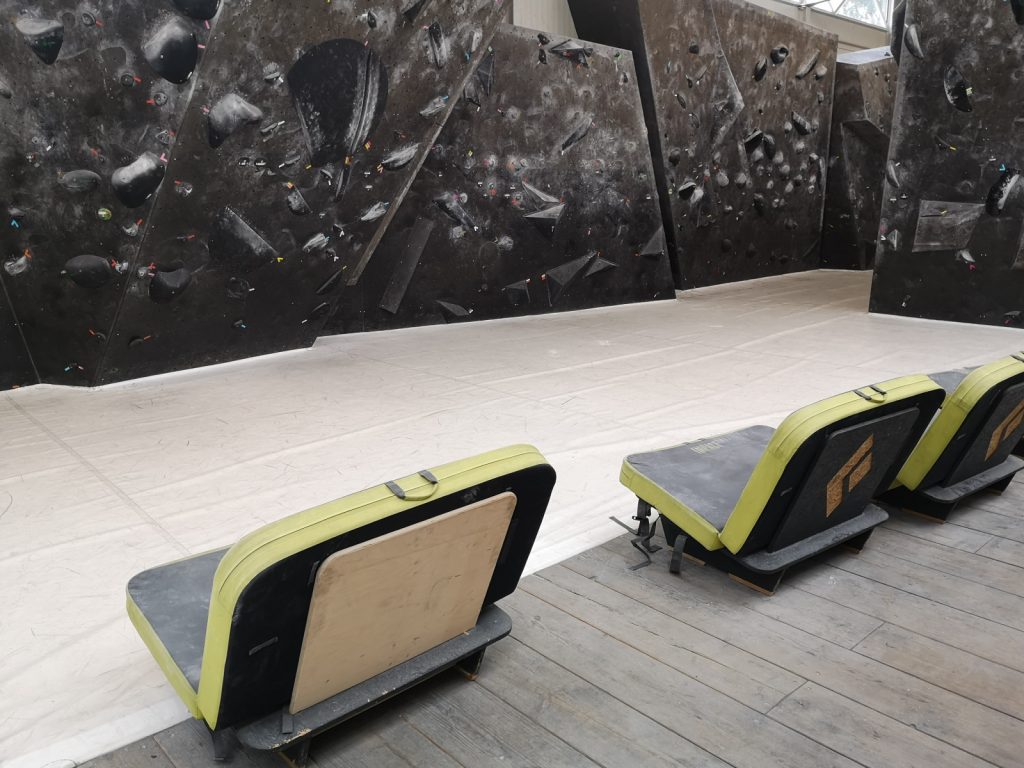
Ap’n Daun Climbing Centre, Chur
Chur, located in Graubünden, Switzerland, offers several climbing and bouldering opportunities.
Ap’n Daun Climbing Centre. This centre offers everything a climbing enthusiast could want over an area of 2,000 square meters. It includes a main hall with various wall structures, two boulder rooms, a training site with a practice wall, and a balcony with a spacious outdoor climbing area. The centre offers attractive climbing opportunities for all levels of difficulty. The equipment can be rented on site.
The centre is open all year round. The opening hours are Monday – Friday: 9 am – 10.30 pm and Saturday + Sunday: 10 am – 7 pm.
Also to note in Chur:
Haldenstein Climbing Garden: Considered Switzerland’s first of its kind, the Haldenstein climbing garden was already a popular “playground” for climbers in and around Chur in the 1950s. Thanks to a great restoration effort in 2012/2013, many of the routes have been improved, signed and made safer.
Quadrel Boulder Hall is also located in the city area, and offers great climbing and bouldering opportunities all year round.
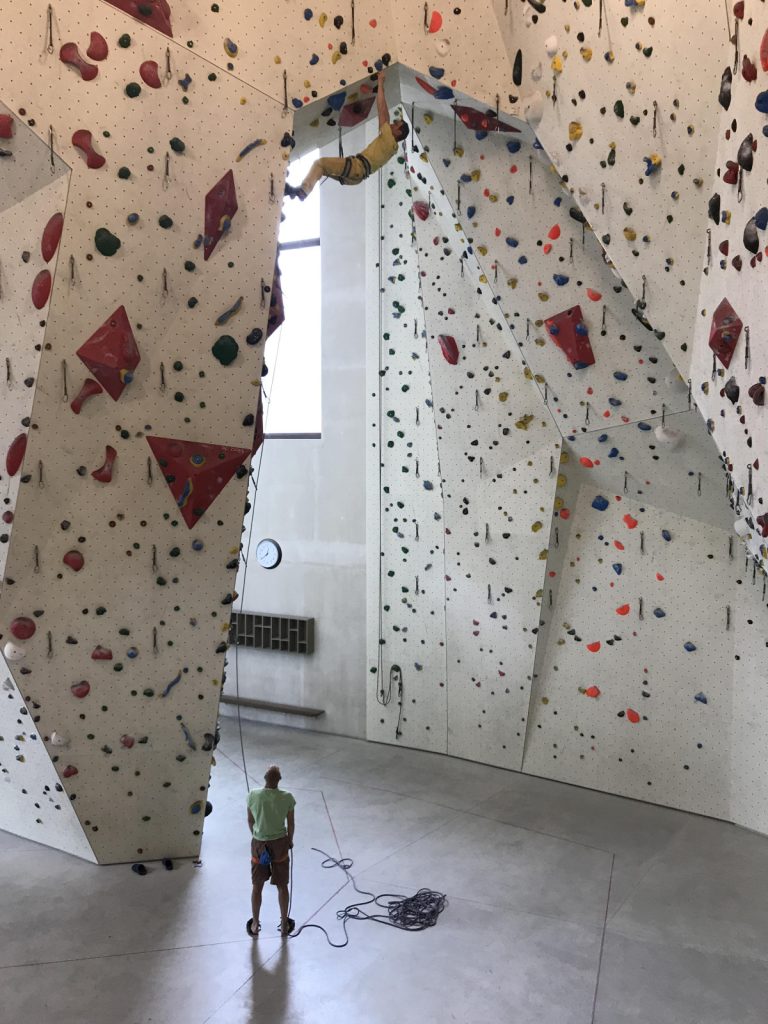
Pilatus Indoor, Root
The Pilatus Indoor climbing centre is the largest climbing centre in Central Switzerland, offering the latest and most modern equipment to all climbers, from beginners to experts.
The centre covers all needs from beginners to experts. In addition to the spacious climbing and bouldering facility, the modern infrastructure also offers training facilities such as a theory room and course climbing wall. Non-climbing visitors are welcome in the bar, bistro, and lounge area.
The centre offers a variety of programs suitable for all age groups and levels, including basic training, private workshops, personal training, children and families program, company and group events, as well as climbing outdoors. Every Wednesday, Pilatus Indoor opens at 9.00 am for parents who want to climb and take their children with them.. This way the kids can be looked after by one person while all the other parents are climbing.
Monday – Friday: 10.00 – 22.00
Saturday: 10.00 – 20.00
Sunday: 10.00 – 18.00
The centre offers various pricing options, including single entry prices and subscriptions.
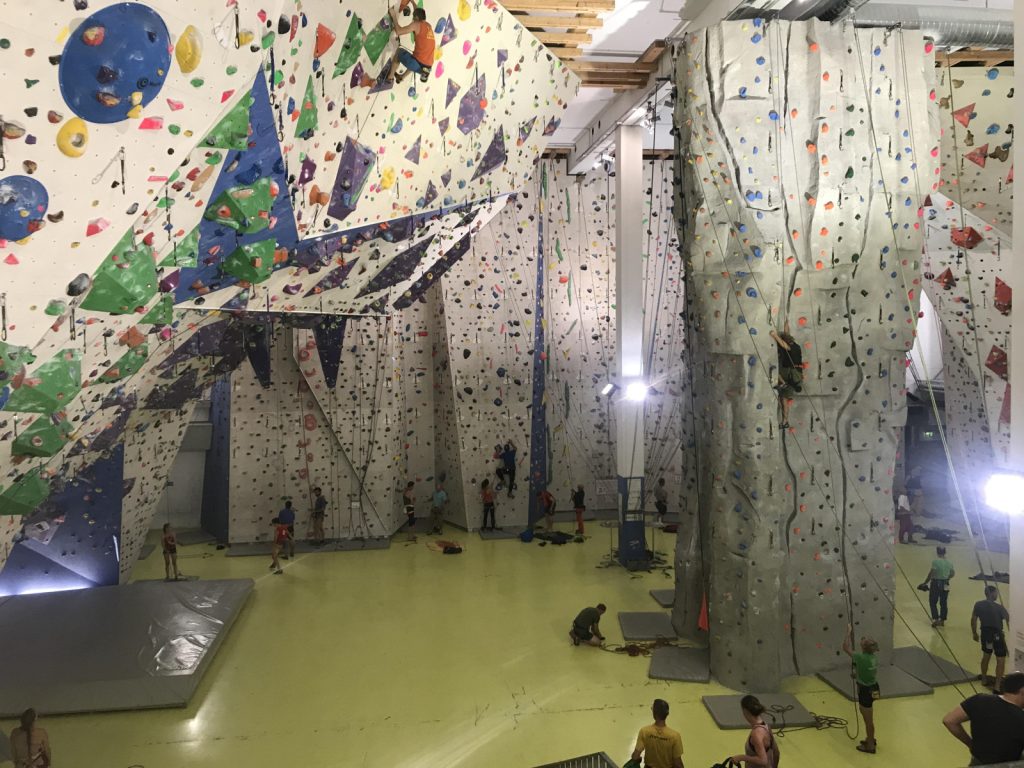
Western Switzerland
Grimper.ch is a network of climbing gyms located in the heart of Western Switzerland. It currently operates six climbing gyms, making it one of the largest centres in the West of Switzerland. These gyms are equipped with routes of various kinds, suitable for both experienced climbers and beginners and located in Givisiez, Echandens, Lausanne-Beaulieu, Villeneuve, Fribourg, and Meyrin-Satigny.
The gyms offer hundreds of routes and boulders that are frequently renewed. In addition to climbing, these gyms also provide a bar where you can relax and enjoy a drink or some food after your session.
The bouldering hall in Lausanne-Beaulieu is a popular climbing facility located in the heart of Lausanne. It opened its doors on Wednesday, April 13, 20221. The hall offers a variety of climbing experiences for all types of climbers, with new bouldering routes being added every week.
The facility is equipped with beautiful volumes and holds, whether you prefer slab or overhang climbing, you’ll find plenty of projects to work on. The hall is an ideal place to spend a sporty moment alone, with family, or with friends.
Open Monday to Friday: 09:00 – 22:30 and Saturday to Sunday: 09:00 – 20:00.
The halls offer various pricing options, including individual entry, a card for 11 entries, and subscriptions for 3, 6, or 12 months. The subscriptions are also valid at the Fribourg location and offer a 50% discount on entries at other Grimper.ch halls as well as a 10% discount on gear sold at these locations. Please note that children under the age of 14 must be accompanied by an adult to practice climbing. In the bouldering halls, they can climb alone from the age of 12.
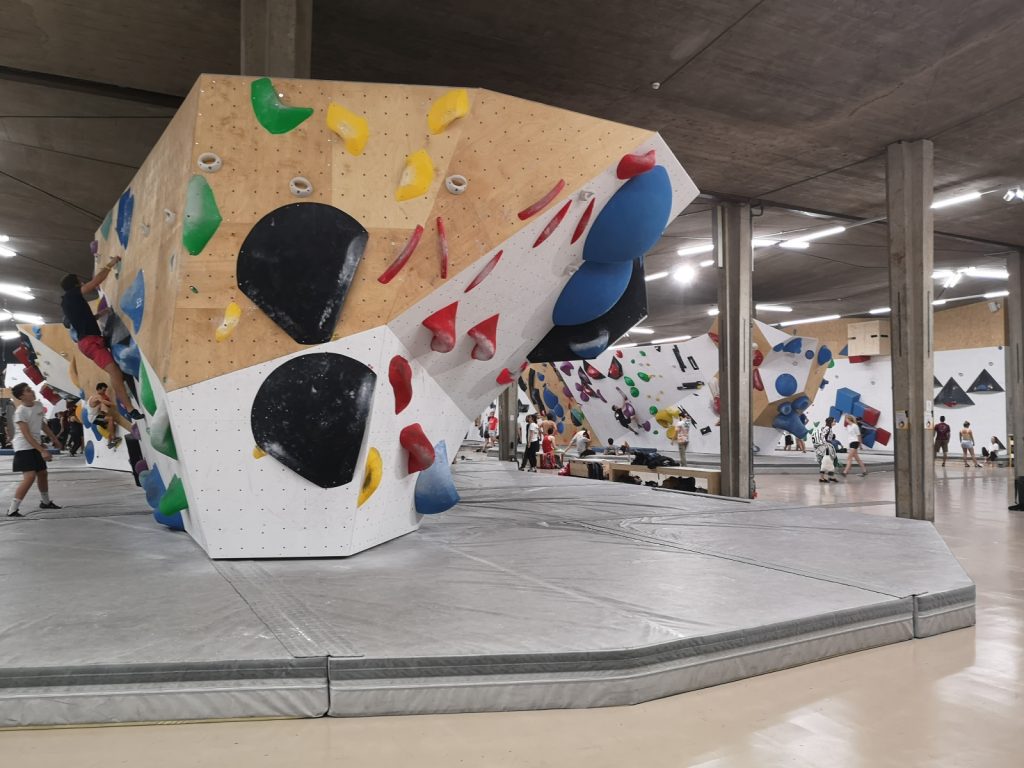
AUTO BELAYING
Auto belay devices have become an integral part of climbing walls, providing climbers the ability to climb solo safely. These devices control the rope during belaying, allowing the belayer to manage their duties with minimal physical effort.
The development of auto belay devices has been guided by a focus on safety and ease of use. In recent years, there has been an emphasis on improving safety measures around auto belay usage in indoor climbing gyms.
For instance, the Climbing Wall Association released updated guidance in 2023 that includes several key recommendations including that facility operators must provide orientations to all climbers utilizing auto belay devices. These orientations should cover the proper usage of the equipment and individual responsibilities. They must also assess climbers’ competency in using auto belays and document these assessments.
The updated guidance requires using barriers with auto belays. Barriers help demarcate the auto belay area, reducing the risk of incidents where a climber fails to clip in.
These developments reflect a growing understanding of climber behaviour and attitudes toward auto belay usage, as well as a commitment to ensuring that climbers can enjoy their sport safely and responsibly.
